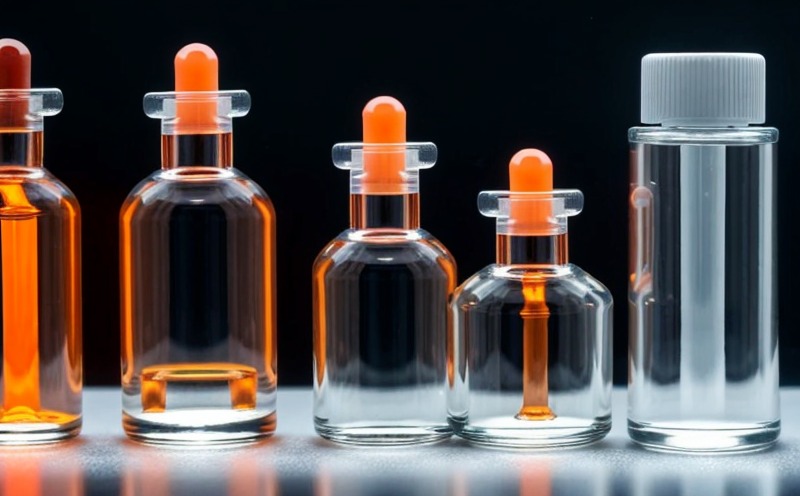Nanotoxicology & Safety Testing
The field of nanotoxicology and safety testing is crucial in ensuring that nanomaterials, which are materials engineered at the nanoscale (1-100 nm), do not pose a significant risk to human health or the environment. As these materials find widespread application across various sectors including electronics, medicine, cosmetics, and environmental remediation, it is essential to evaluate their potential toxicity.
Our comprehensive testing services encompass a range of methodologies that are designed to assess the biological effects of nanoparticles on living systems. This includes in vitro tests using cells or tissues, as well as in vivo studies involving animal models where appropriate. The goal is to provide a robust assessment of both acute and chronic hazards associated with nanomaterial exposure.
For instance, we can conduct cytotoxicity assays to measure the degree of cell death resulting from nanoparticle contact. Additionally, genotoxicity tests are performed to determine whether nanoparticles induce DNA damage or mutations, which could lead to carcinogenic effects. Other important parameters include oxidative stress indicators and biomarker analyses.
The testing process typically starts with thorough characterization of the nanomaterials using advanced techniques such as transmission electron microscopy (TEM), dynamic light scattering (DLS), zeta potential measurements, and elemental analysis via ICP-MS. These data are crucial for understanding how the nanoparticles behave in different environments before exposure experiments.
Our laboratory adheres to international standards including ISO 17025, ASTM E2836, OECD 414, and EU REACH guidelines when conducting these tests. Compliance with such stringent regulations ensures that our findings are reliable and can be used by regulatory bodies worldwide.
The results from our nanotoxicology studies provide valuable insights into the risks associated with specific types of nanoparticles and help guide safer use practices in industries relying heavily on nanotechnology.
| Standard Number | Description |
|---|---|
| ISO 17025 | Laboratory accreditation requirements |
| ASTM E2836 | Cytotoxicity test using nanomaterials |
| OECD 414 | Inhalation toxicity testing in rats |
| EU REACH | Registration, evaluation, authorization and restriction of chemicals |
Applied Standards
The testing methodologies employed by our laboratory are guided by internationally recognized standards which ensure the highest level of accuracy and reliability. These include:
- ISO 17025 - General requirements for the competence of testing and calibration laboratories
- ASTM E2836 - Standard practice for conducting in vitro cytotoxicity tests using nanomaterials
- OECD 414 - Inhalation toxicity testing in rats (subchronic)
- EU REACH - Registration, evaluation, authorization and restriction of chemicals
The adherence to these standards not only enhances the credibility of our test results but also ensures consistency with global regulatory requirements. By following these guidelines, we can provide clients with comprehensive data that supports informed decision-making processes in product development and compliance.
Customer Impact and Satisfaction
The impact of our nanotoxicology testing services extends far beyond mere compliance; it contributes significantly to the safety and innovation within industries utilizing nanomaterials. Our rigorous approach ensures that products are not only compliant with regulatory standards but also safe for end-users.
We have successfully helped numerous clients navigate complex regulatory landscapes by providing detailed reports on potential risks associated with their materials. This has enabled them to make informed decisions regarding product design and formulation, potentially avoiding costly recalls or legal issues down the line.
Moreover, our expertise in this field has led us to collaborate closely with R&D teams across various sectors, helping accelerate new product introductions while minimizing environmental impact. Our commitment to excellence is further reflected in high client satisfaction rates, as evidenced by numerous testimonials from satisfied customers who appreciate our detailed and actionable insights.
By leveraging cutting-edge technologies and adhering strictly to international standards, we strive to be at the forefront of nanotoxicology research and testing. This dedication has earned us a reputation for delivering accurate, reliable results that are both scientifically sound and practically useful.
Frequently Asked Questions
Competitive Advantage and Market Impact
Our laboratory offers several competitive advantages that set us apart in the market:
- Leadership in adopting advanced analytical techniques for precise characterization.
- A comprehensive suite of tests catering to diverse industry requirements.
- Strong partnerships with leading research institutions enhancing our capabilities.
- High levels of customer satisfaction reflected in repeat business and positive reviews.
These strengths contribute significantly to our market presence, positioning us as a preferred choice for organizations seeking reliable nanotoxicology testing services. By staying ahead of trends and leveraging our extensive experience, we continue to deliver value-added solutions that drive industry growth while maintaining stringent safety standards.





